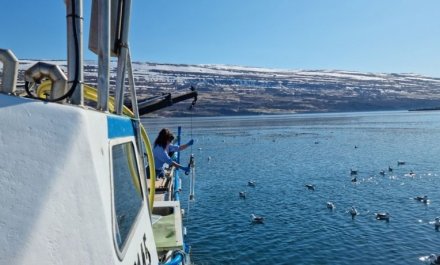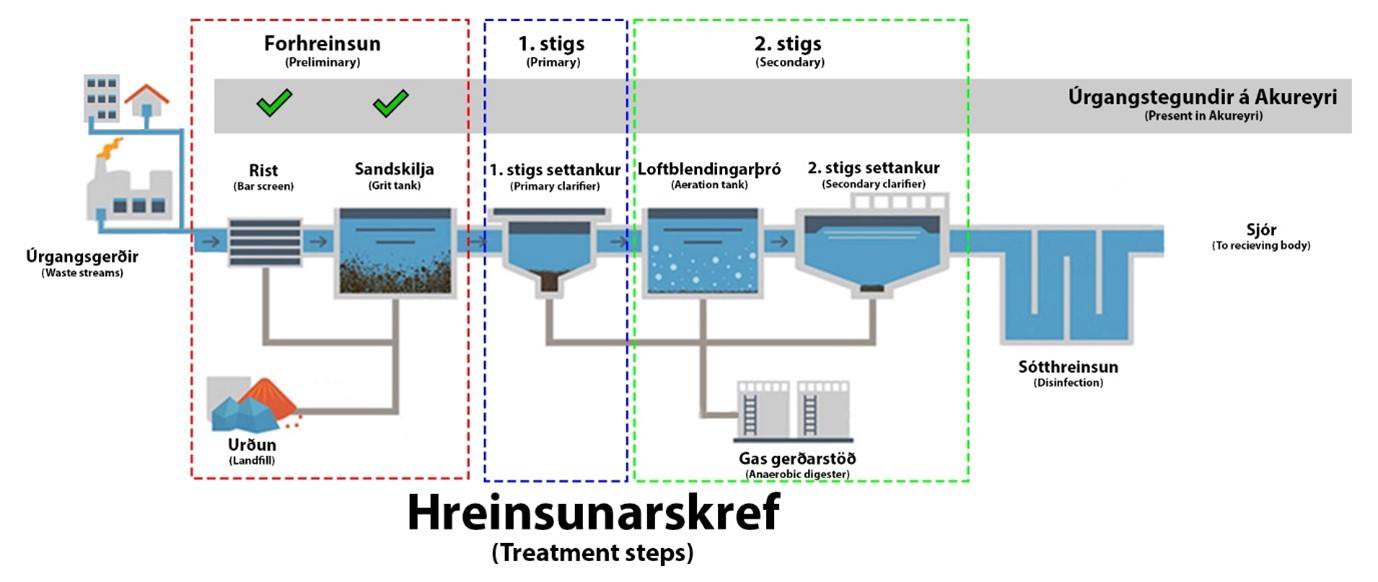- Námið
- Námsframboð
- Allt nám
- Grunnnám
- Félagsvísindi
- Fjölmiðlafræði
- Nútímafræði
- Lögfræði
- Sálfræði
- Lögreglufræði
- Kennarafræði
- Hjúkrunarfræði
- Iðjuþjálfunarfræði
- Líftækni
- Náttúru- og auðlindafræði
- Sjávarútvegsfræði
- Viðskiptafræði - stjórnun og markaðsfræði
- Viðskiptafræði - stjórnun og fjármál
- Viðskiptafræði - sjávarútvegsfræði
- Tölvunarfræði
- Tölvunarfræði Diplóma
- Sjávarútvegsfræði og viðskiptafræði
- Lögreglufræði fyrir starfandi lögreglumenn
- Lögreglu- og löggæslufræði
- Sjúkraliðar öldrunar- og heimahjúkrun
- Sjúkraliðar samfélagsgeðhjúkrun
- Tæknifræði
- Tölvunarfræði
- Framhaldsnám
- Auðlindafræði
- Félagsvísindi
- Heimskautaréttur
- Lögfræði
- Menntavísindi - Almennt svið
- Menntavísindi - Lestrarfræði
- Menntavísindi - Sérkennslufræði
- Menntavísindi - Stjórnun og forysta
- Menntavísindi - Upplýsingatækni
- Menntunarfræði
- Menntunarfræði diplóma
- Heilbrigðisvísindi
- Endurhæfing
- Heilsugæsla í héraði - fræðileg
- Langvinn veikindi og lífsglíman
- Ljósmæður - heilbrigði kvenna
- Stjórnun í heilbrigðisþjónustu
- Öldrun og heilbrigði
- Iðjuþjálfun
- Doktorsnám
- Verkir og verkjameðferð
- Sjávarbyggðafræði MA
- Haf- og strandsvæðastjórnun MRM
- Stjórnun sjávarauðlinda
- Menntunarfræði MT
- Starfstengd leiðsögn
- Diplómunám í menntavísindum MA
- Diplómunám: Nám og læsi - lestrarfræði
- Diplómunám: Nám og margbreytileiki - sérkennslufræði
- Diplómunám stjórnun og forysta í lærdómssamfélagi
- Diplómunám: Upplýsingatækni í námi og kennslu
- Sálfræði
- Diplómanám Forysta í lærdómssamfélagi
- MS í Stjórnun
- MM í stjórnun
- Stafræn heilbrigðistækni
- Ráðgjöf í málefnum fólks með heilabilun
- Hjartasjúkdómar og sykursýki
- Heilsugæsluhjúkrun
- Geðheilbrigði og áföll
- Hjúkrunarfræði
- Geðhjúkrun
- Kennsluráðgjöf og starfsþróun
- Doktorsnám
- Skiptinám
- Símenntun
- Vísindaskólinn
- Miðstöð skólaþróunar
- Sækja um
- Námsupplýsingar
- Háskólalífið
- Námsframboð
- Stúdentinn
- Rannsóknir
- Samfélagið
- Háskólinn
- Um HA
- Fræðasvið og deildir
- Stjórnskipulag
- Háskólafundur
- Háskólaráð
- Háskólaskrifstofa
- Lög og reglur
- Ráð og nefndir
- Rektor
- Rektorsskrifstofa
- Skipurit
- Stefnur og áætlanir
- Háskólasvæðið
- Starfsfólk
Skólphreinsun á Akureyri

Um verkefnið
Magn fráveituvatns á Akureyri er mjög mikið. Það er á við fráveitu frá bæ sem er tvöfalt stærri. Þessu veldur bæði iðnaður og mun meiri einstaklingsnotkun á vatni en gengur og gerist í öðrum löndum. Vandamálið eykst svo við árlega komu 200.000 ferðamanna. Upphaflega var skólpi dælt beint í Eyjafjörð án hreinsunar. Á síðustu 7 árum hefur Norðurorka fylgst með ástandi hafsins í firðinum, bætt við söfnunarröri fráveitu meðfram strandlengju Akureyrar ásamt dælustöðvum sem dæla skólpinu norður fyrir bæinn. Árið 2020 hófst svo starfsemi hreinsistöðvar sem sigtar allt stærra en 3 mm úr fráveitunni áður en henni er veitt út í sjó. Þetta eru framfarir en því miður ná sigtin ekki að fjarlægja mögulega skaðleg efni eins og sjúkdómsvaldandi saurbakteríur, örplast, þungamálma og önnur efni.
Flestir staðir í Evrópu eru með annars eða þriðja stigs hreinsun á fráveitu til að minnka álag á umhverfið. Á Íslandi er verið að vinna í því að fyrsta stigs hreinsun komist á alls staðar. Þó náttúran geti brotið niður mengandi efni getur hún átt erfitt með sum þeirra, þau brotnað hægt niður og geta valdið hættu fyrir dýralíf, þar á meðal fiska, hvali og fugla sem og búsvæði strandsvæðanna sjálfra. Þess vegna er mjög mikilvægt að við séum öll meðvituð um að allt það sem við skolum niður í klósettið og að öll efni sem við notum til þrifa og þvotta enda í sjónum.
Hver er þín skoðun á skólphreinsun á Akureyri?
Þessi könnun er verkefni að frumkvæði nemenda við Háskólann á Akureyri, innan grænfánaverkefnisins, og er hluti af starfsemi umhverfisráðs Háskólans á Akureyri. Öll svör eru skráð og geymd nafnlaust. Í þessari könnun viljum við safna gögnum um vitund og skoðanir varðandi hreinsun skólps, til að upplýsa þá sem taka ákvarðanir. Þakka þér kærlega fyrir þátttökuna!
Þátttakendur eiga möguleika á að vinna pakka af Oceansaver styrkt frá Vistvænu búðinni.
Fyrstu niðurstöður (á ensku)
The City of Akureyri has an output of wastewater that is comparable to a town that is twice as large. This is due to industrial activities but also an high private use of water, which is a general phenomenon in Iceland. This problem is exacerbated by the arrival of 200.000 tourists per year.
Historically, wastewater was pumped directly into Eyjafjörður without treatment. Over the last 7 years, Norðurorka has implemented collection of wastewater, implemented pumping stations, and started monitoring water quality. In the summer of 2020, a preliminary treatment facility was added that filters out everything that is larger than 3mm.
While this is an improvement, unfortunately preliminary treatment alone does not remove potentially harmful substances like disease-causing fecal bacteria, chemicals, microplastics, or heavy metals.

Most places in Europe use secondary and/or tertiary wastewater treatment to decrease the burden on the environment – not so Iceland:
Report to the EFTA Surveillance Authority regarding the implementation of Directive 91/271/EU on the treatment of wastewater from agglomerations.
In Iceland, we are still working on implementing preliminary treatment for all municipalities, to filter out large items like wet wipes and other rubbish. While the natural environment has some capacity to remove certain pollutants, others can be particularly problematic as they do not easily break down and can pose a risk to wildlife, including fish, whales, and birds, as well as the marine and coastal habitats themselves. Therefore, it is very important that we are all aware that everything we flush down the toilet, every chemical we use for cleaning and washing, will end up in the sea.
The survey of which we present here first results is a student-initiated project at the University of Akureyri, within the green flag project, and is part of the activities of the environmental council of the University of Akureyri.
The survey was released in January 2022 from the Environmental Council of the University of Akureyri. Since then, 333 participants have responded to it. The survey was advertised via social media and via word-by-mouth.
THE RESULTS SHOW THAT:
- 80,5% of the participants consider wastewater treatment as very important
- 62% of participants did not know that the sewage plant in Akureyri conducts filtering
- 69% were not aware of the low sewage treatment standards based on Icelandic law
- 90% of the participants think that the Icelandic law should be changed
- 96% of participants would like to improve the current wastewater treatment in Akureyri
- The most common answer of why sewage treatment is important was “protecting the environment” followed by “protecting our health”
- Participants are willing to contribute with actions like: “Not throwing wet wipes, floss and other rubbish into the toilet”, “Throw left-overs from the kitchen into the organic waste instead of into the toilet” or “Collect and return paint and other chemicals instead of pouring them into the sink” among others
- We are aware that the improvement of the wastewater treatment plant would need a great investment. Therefore, we asked the participants how much they will be willing to pay for it. 1000-3000 ISK/month was the most common answer
- We also asked a few questions to characterize the participants. A dominance of female participants is probably explained by the in general higher availability of women to participate in surveys, but may also reflect a greater interest among women in this topic. 199 women and 127 men participated
- We asked about where participants live and where they come from. 67% of participants were living in Akureyri/Eyjaford and 77% were from Iceland, implying that one fourth of respondents were immigrants. As this does not reflect the proportion of immigrants in the Icelandic population we could either conclude that this survey was better distributed among immigrants, or immigrants were more willing to respond to the survey. The latter could reflect a greater concern about wastewater treatment among immigrants
- We were surprised by the high percentage of participants that also submitted a comment in the free-text part of the survey. The majority of the comments were demanding better sewage treatment and lots of them expressed their surprise and concern about the low standards of wastewater treatment in Akureyri
Hver er þín skoðun á skólphreinsun á Íslandi?
Þessi könnun er verkefni að frumkvæði nemenda við Háskólann á Akureyri, innan grænfánaverkefnisins, og er hluti af starfsemi umhverfisráðs Háskólans á Akureyri. Öll svör eru skráð og geymd nafnlaust. Í þessari könnun viljum við safna gögnum um vitund og skoðanir varðandi hreinsun skólps, til að upplýsa þá sem taka ákvarðanir. Þakka þér kærlega fyrir þátttökuna!
Þrír heppnir þátttakendur í könnuninni munu hljóta verðlaun sem gefin verða í samstarfi við Skessusápu, Mistur og Farva.
Rannsakendur
- Natalia Ramírez (UNAK)
- Yvonne Höller (UNAK)
- Sean Michael Scully (UNAK)
- Susanne Lieske (UNAK)
- Margrét Sól Jónasdóttir (UNAK)
- Fríða Freydís Þrastardóttir (UNAK)
- Renata Colwell (UNAK)
- Victoria Patenaude (UNAK
- Jordane Liebeaux (UNAK)
- Audrey Matthews (UNAK)
